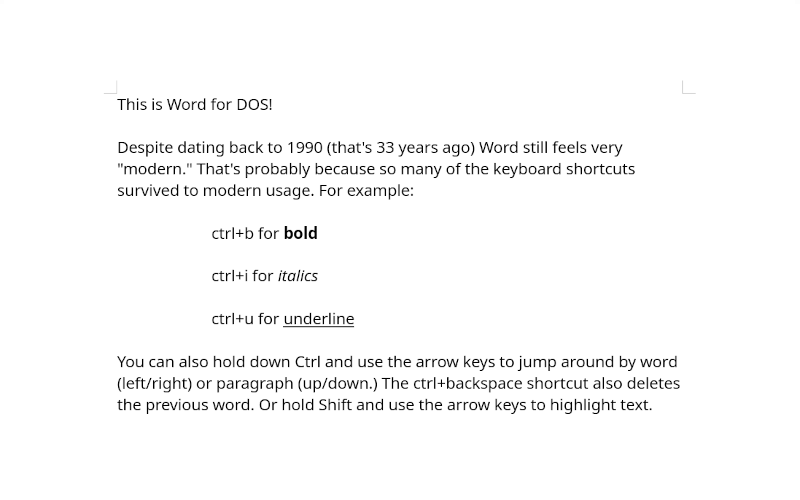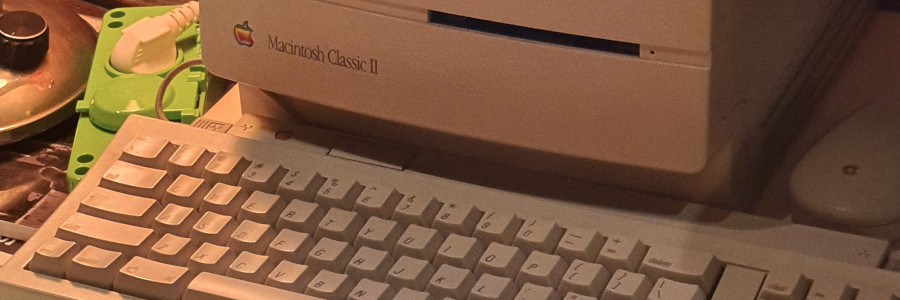 A look back: Microsoft Word for DOS 5.5
A look back: Microsoft Word for DOS 5.5
While over 30 years old, this DOS word processor still feels very modern in a "retro" way.
Throughout the 1980s and into the 1990s, businesses almost exclusively ran the DOS operating system. DOS was a simple operating system, but due to its popularity, many vendors wrote applications for it.
The word processor was the workhorse in any business setting. It didn't matter your role or level in the organization, you probably used a word processor to do at least part of your work. The word processor was ubiquitous.
One popular word processor was Microsoft Word. While I didn't use Word for DOS at the time, I have experimented with it more recently.
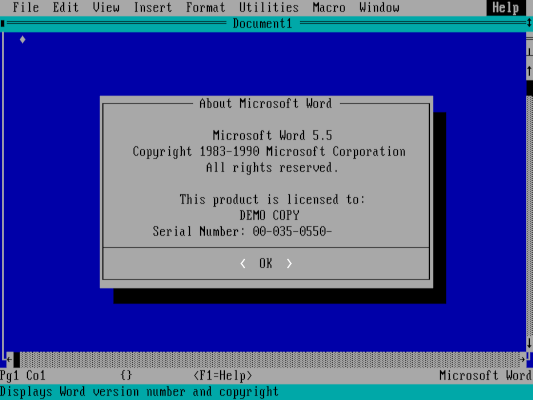
Interestingly, Word for DOS feels very modern to me, probably because the keyboard shortcuts are the same as the keyboard shortcuts we rely on today. My fingers don't have to "remember" a new key combination for most of the formatting in Word for DOS. The most common shortcuts are still there: Ctrl+B for bold, ctrl+I for italics, ctrl+U for underline.
I also like that keyboard navigation is essentially the same. Word supports ctrl+backspace to delete the previous word, and you can hold ctrl and use the arrow keys to jump around the document. You can also hold the shift key and use the arrow keys to select text.
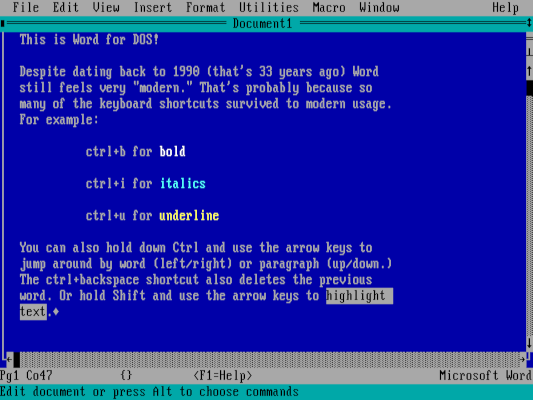
Like any DOS application of the era, Word for DOS did not run in graphics mode by default. If you wanted to see what your document would look like when printed, you had to switch to a print preview mode that would render a low-resolution version of your document as it would appear on paper.
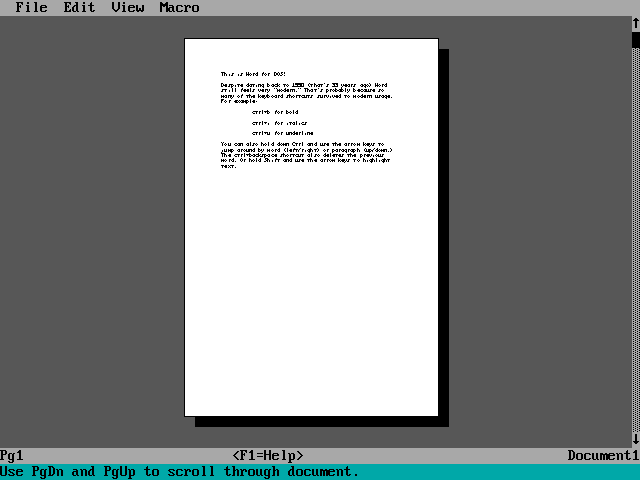
However, you could switch into a graphics mode, which makes Word for DOS feel more natural for a modern audience. In graphics mode, Word can display text formatting like bold, italics, and underline as it would appear in print.
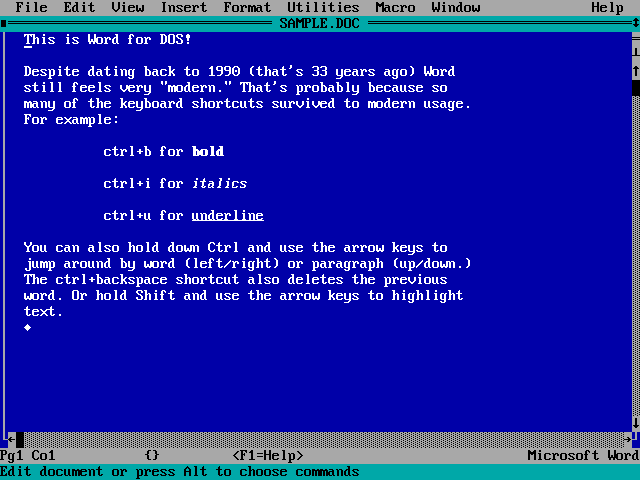
While I don't know that I would use Word for DOS for client work, it works well enough for casual use. Writers who want a "distraction free" writing environment might try Word for DOS - if you don't mind the white-on-blue color scheme that was common with DOS applications. You can even load documents created with Word for DOS in LibreOffice, using LibreOffice's vast support for legacy file formats.
